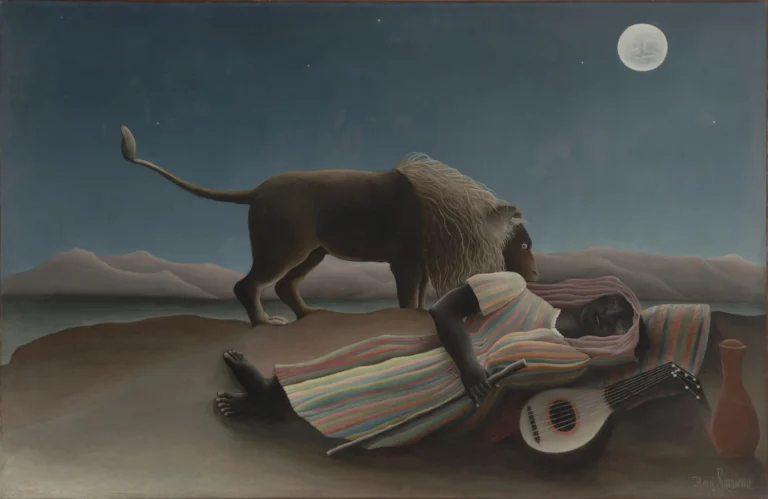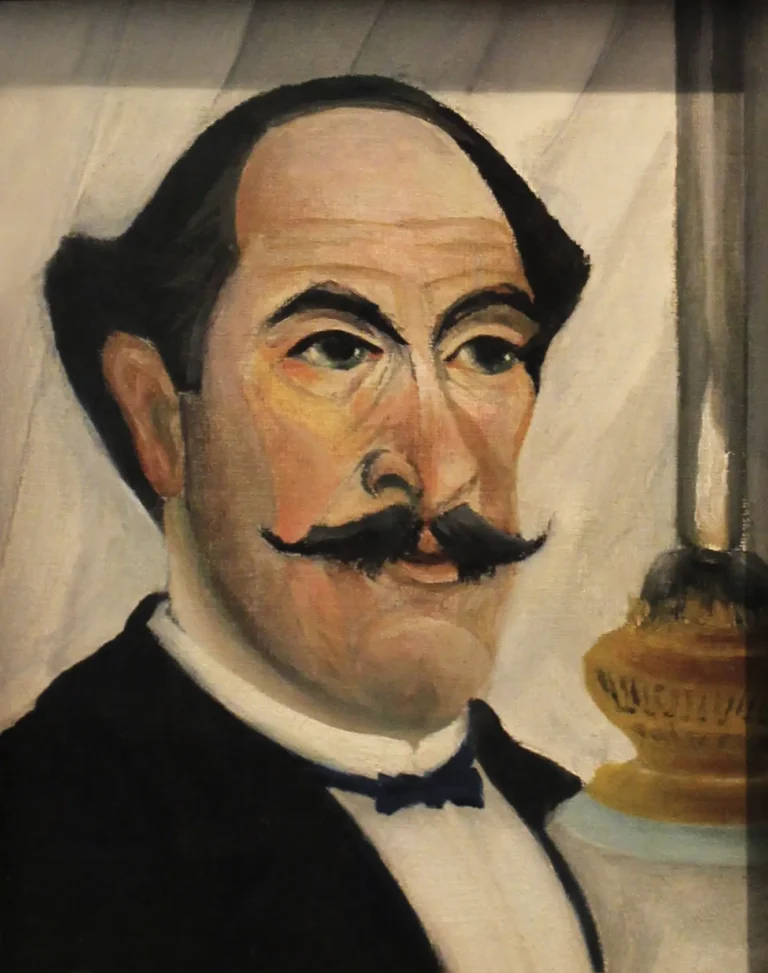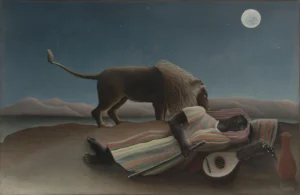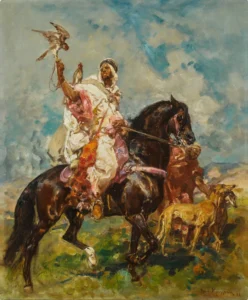The Sleeping Gypsy (1897)
Created by Henri Rousseau in 1897, **The Sleeping Gypsy** is a striking work that presents a dreamlike scene with a sleeping gypsy woman and a curious lion under a full moon. Rousseau's vibrant colors and childlike simplicity define the painting's charming quality. The gypsy represents freedom and vulnerability, while the lion symbolizes the unseen dangers of life. As a key piece of Naïve Art, it has left a lasting impact on the art world.
Year 1897
About the Artwork
Did You Know
Liked what you see? Add it to your collection.
Enjoyed reading? Share it.
... continued
The Sleeping Gypsy
created by Henri Rousseau in 1897, is a seminal work of Naïve Art, specifically within the Primitivism genre. Here are some key points about the painting:
Artist and Style
Henri Rousseau, a French Naïve artist, painted this work despite having no formal artistic training. His style is characterized by simple shapes, large blocks of color, and a disregard for realistic spatial relationships, which gives the painting its distinctive and charming quality.
Description
The painting depicts a desert scene under a moonlit night sky. A dark-skinned woman, described as a "wandering Negress" and a mandolin player, lies asleep on the ground. She is dressed in a vibrant, striped Oriental costume and is accompanied by a mandolin and a tall jar of water. A lion, with its mane illuminated by the moonlight, cautiously approaches her, sniffing but not attacking. The background features rolling mountains and a serene night sky with a full moon.
Symbolism and Interpretation
The painting is rich in symbolism. The gypsy woman represents a nomadic and free lifestyle, while the lion can be seen as a symbol of danger or the unknown. The woman's state of sleep can be interpreted as vulnerability, innocence, or a state of being oblivious to the dangers around her. The overall scene is dreamlike and poetic, with each element—the gypsy, the lion, and the moon—playing an equal role in the composition.
Provenance
**The Sleeping Gypsy** was first exhibited at the 13th Salon des Indépendants in 1897. After being rejected by the mayor of Rousseau's hometown, Laval, it entered the private collection of a Parisian charcoal merchant. It was rediscovered in 1924 by the art critic Louis Vauxcelles and later purchased by several collectors before being donated to the Museum of Modern Art (MoMA) in New York City by Mrs. Simon Guggenheim in 1939.
Conservation
In preparation for MoMA's 2019 reopening, the painting underwent significant conservation work. This included removing nearly a century's worth of discolored varnish layers to reveal Rousseau's original colors and inspecting the painting using X-rays to uncover hidden compositions beneath the surface.
Current Location
**The Sleeping Gypsy** is now part of the permanent collection at the Museum of Modern Art (MoMA) in New York City, where it is displayed alongside other iconic works, including Vincent van Gogh's **The Starry Night**.










